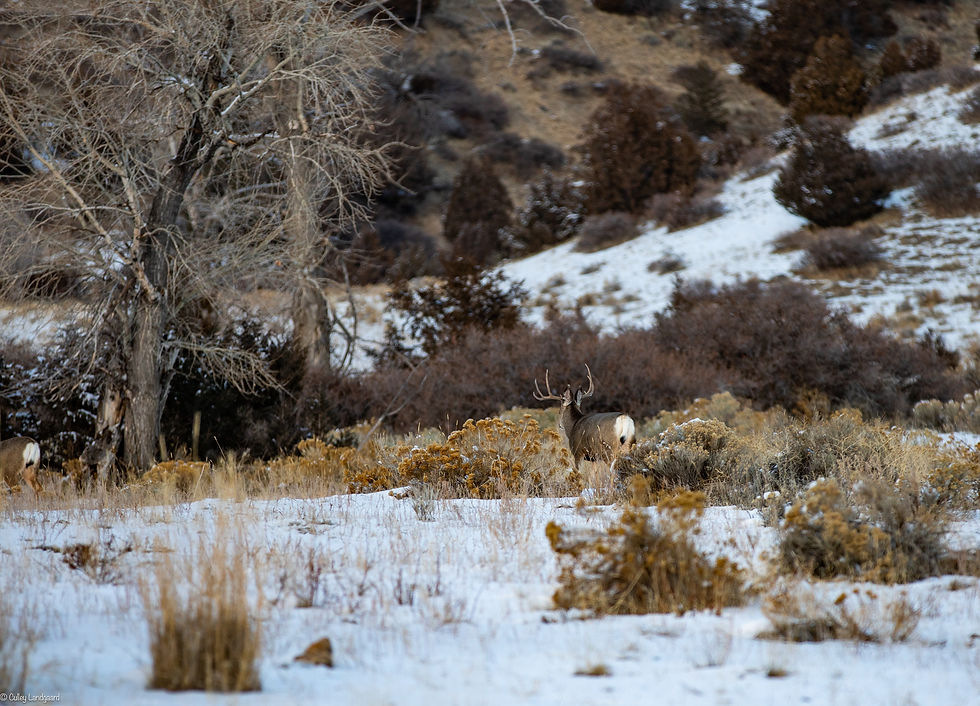The Struggle for Public Land Access in Montana
- Sam Hall
- Oct 22, 2019
- 4 min read
The Struggle for Public Land Access in Montana

Montana is a state that embodies the best opportunities for recreation in the outdoors. From the rolling plains of Eastern Montana to the breathtaking Rocky Mountains in the West, the adventure that Montana’s vast landscape offers is second to none. Whether your passion is searching for big browns in the Madison, pursuing elk in the Tobacco Root Mountains, or chasing flocks of waterfowl in the agricultural valleys, every outdoorsman has one thing in common; to experience and enjoy the outdoors. A passion for the outdoors roots deep into our lives as we breath the air of our ancestors and carry out the same traditions. In an ideal world, every outdoors enthusiast would have their own section of land to experience freely, but this is obviously not the case. Much of the public land in Montana has been land locked by private land creating no ease of access.
As someone who began their hunting career in the flatlands of Eastern North Dakota and the woodlands of North Central Minnesota, chasing waterfowl has always been my passion. By hunting animals that frequently move and cover thousands of miles, I’ve had to constantly adapt when hunting waterfowl. Unfortunately, much of this prime hunting land is private property. Because of this, I have knocked on many doors while looking to hunt private fields, ponds and river banks. I know from personal experience that this can be one of the hardest and most daunting parts of hunting. A way to avoid this is to hunt public lands. While public lands can be extremely rewarding, the amount of pressure and foot traffic in an area often diminish the success of a hunt. One solution, perhaps the most difficult, but best one, is to keep public areas from becoming over pressured by reserving vast amounts of hunting land made available to the public. For the residents of Montana, the good news is that this state is huge, of the 94-million acres that make up the great state of Montana, 27.4 million acres are public land which is legally accessible to the general public (Montana Wilderness Association 2019). While the state holds an expansive amount of public lands, many of the parcels are landlocked by private land with no or, limited, access.
Public lands are essential for the management of wildlife. Not just for the taking of game, but also to allow for rest, procreation, and food production vital for the wildlife ecosystem to thrive. The taking of game is an active factor for modern wildlife management practices. There are many parcels of land in Montana and across the Western United States set aside for this purpose. Roughly 1.9 million acres of public land in Montana are landlocked making them inaccessible in some way due to access issues, that number does not include land that has access though water either. The largest inaccessible parcel found by this survey from the Center for Western Priorities was a 10,650-acre piece in central Montana. These numbers signal a huge problem for the outdoors community. It is understandable how these landlocked areas came to be as the Bureau of Land Management acquired abandoned homesteads during the Great Depression., However it is time that something is done to help gain access to these areas. There are several large outdoor organizations fighting for public access through these private lands by putting pressure on congress to act (Brett 2018). Groups like Backcountry Hunters & Anglers, the Theodore Roosevelt Conservation Partnership, and the Rocky Mountain Elk Foundation are the main players in the fight for access. All these organizations are great options to join if you would like to join in the fight for public land access. For example, in 2013, the Rocky Mountain Elk Foundation purchased a private 40-acre piece of land that they then sold to the forestry service to make public. Once this was complete the new parcel of public land gave access to a 18,000-acre parcel of land that was already public but landlocked.

Any solution that facilitates accessibility must involve all of the stakeholders. Landowners, local, state, and Federal officials, along with the consumers of recreational opportunities would be better served by a long lasting, equitable access solution that preserves and protects private land owner’s rights, but emphasizes access and responsible use of the land set aside for all to enjoy.
Montana’s public lands are very important to the state for many reasons. Besides being a main part of recreation, public lands are a large part of tourism in Montana. Opportunity to enjoy the resources, scenery and terrain generates a significant amount of revenue for the state. According to a report from Business for Montana's Outdoors and Headwaters Economics, Montana’s public lands generate $7.1 billion in consumer spending, $286 million in tax revenue, and the lands make for over 71,000 jobs. Montana’s outdoors are places for the community to escape from modern day life and relax in the Montana wilderness. Montana has seen a 40% increase of visitation to state parks over the last decade and a state survey reported that 72% of households used state trails more than once over the course of 2018 (Schacht 2019). Montanans are a very outdoor focused group. Ultimately, access to public lands benefits everyone. It generates a lot of revenue for the state and it gives people more places to recreate and get outdoors.
Works Cited
Schacht. (2019, September 5). New research shows how public lands impact Montana's economy. Retrieved from https://www.abcfoxmontana.com/missoula/new-research-shows-how-public-lands-impact-montana-s-economy/article_c753e678-cf8e-11e9-9df4-3b50c3cc5889.html.
Brett. (2018, August 30). 1.52M acres of public lands in Montana are inaccessible, Missoula mapping company finds. Retrieved from https://billingsgazette.com/outdoors/m-acres-of-public-lands-in-montana-are-inaccessible-missoula/article_c936608e-b2a2-5435-b0d5-2a10cf1f8e7b.html.
Montana Wilderness Association (2019). Montana Wilderness Association - montana hunting, montana public lands. Retrieved October 18, 2019, from https://wildmontana.org/discover-the-wild/what-is-wilderness/factsheet/.



Comments